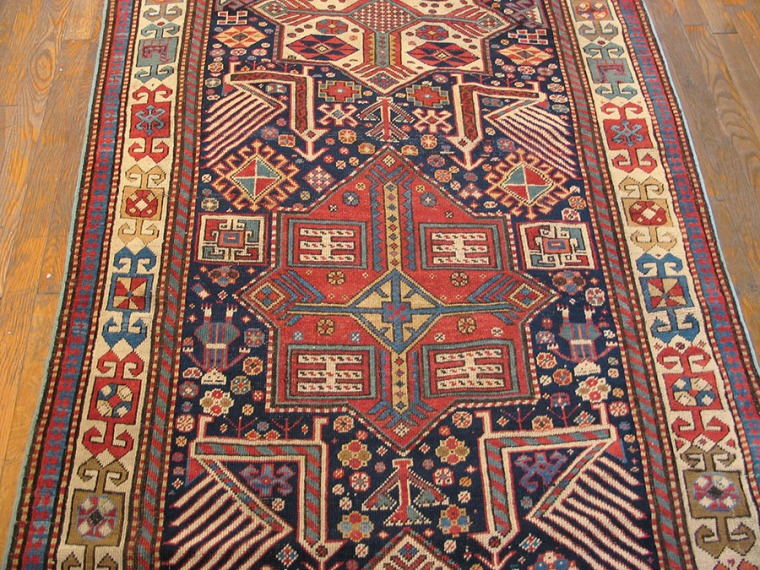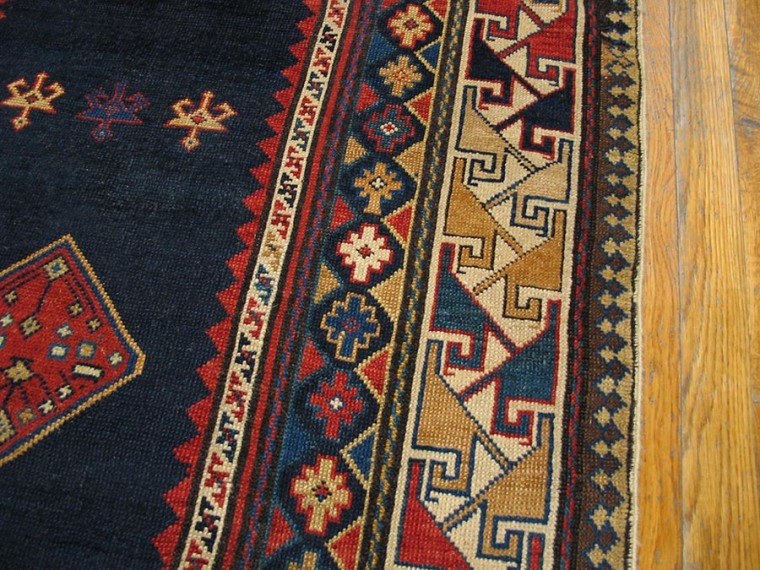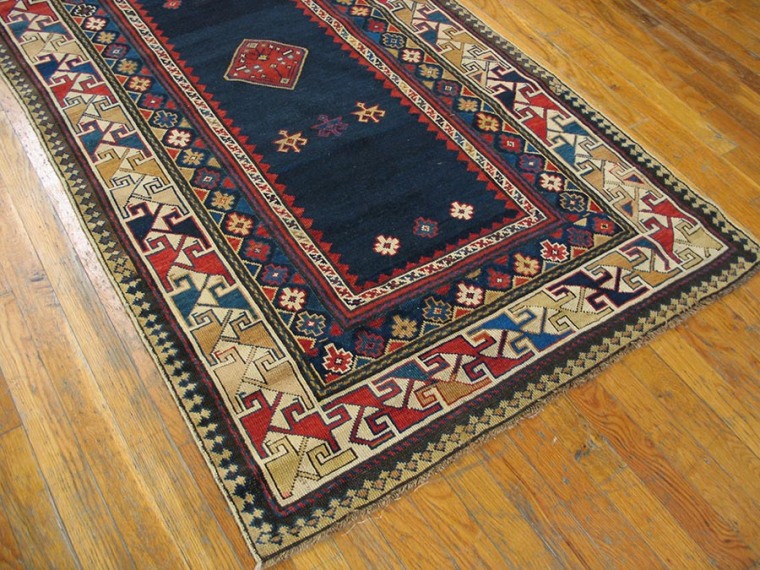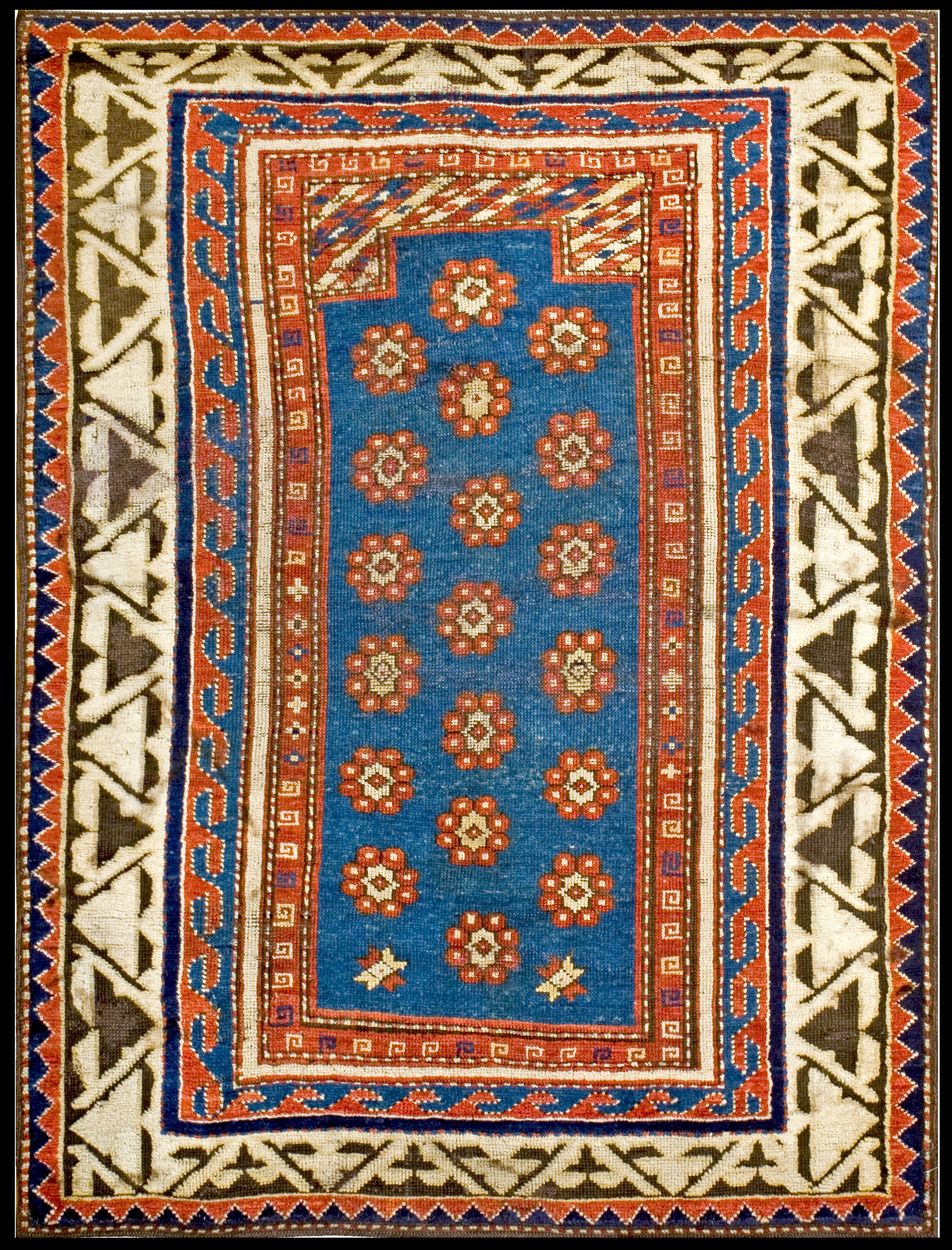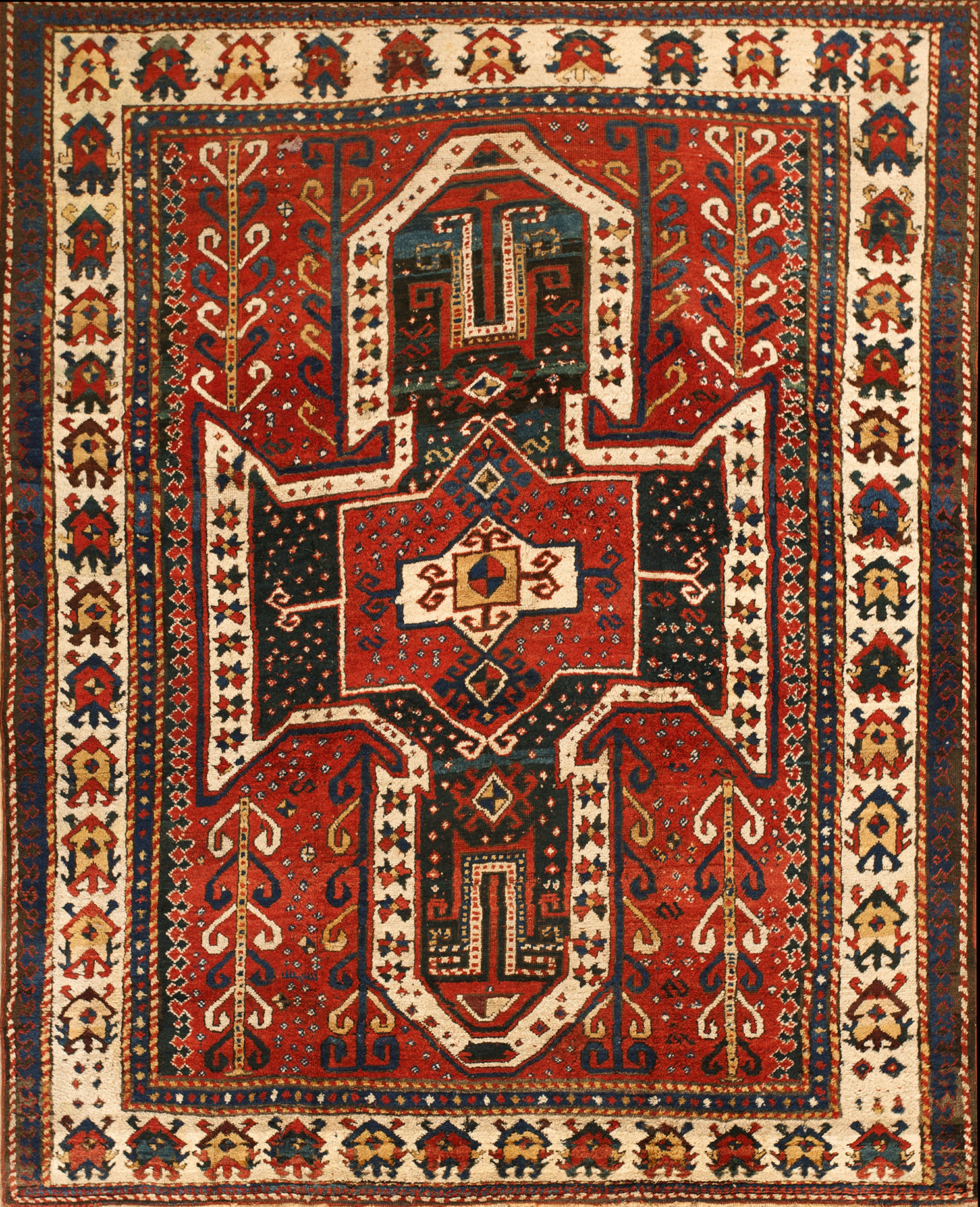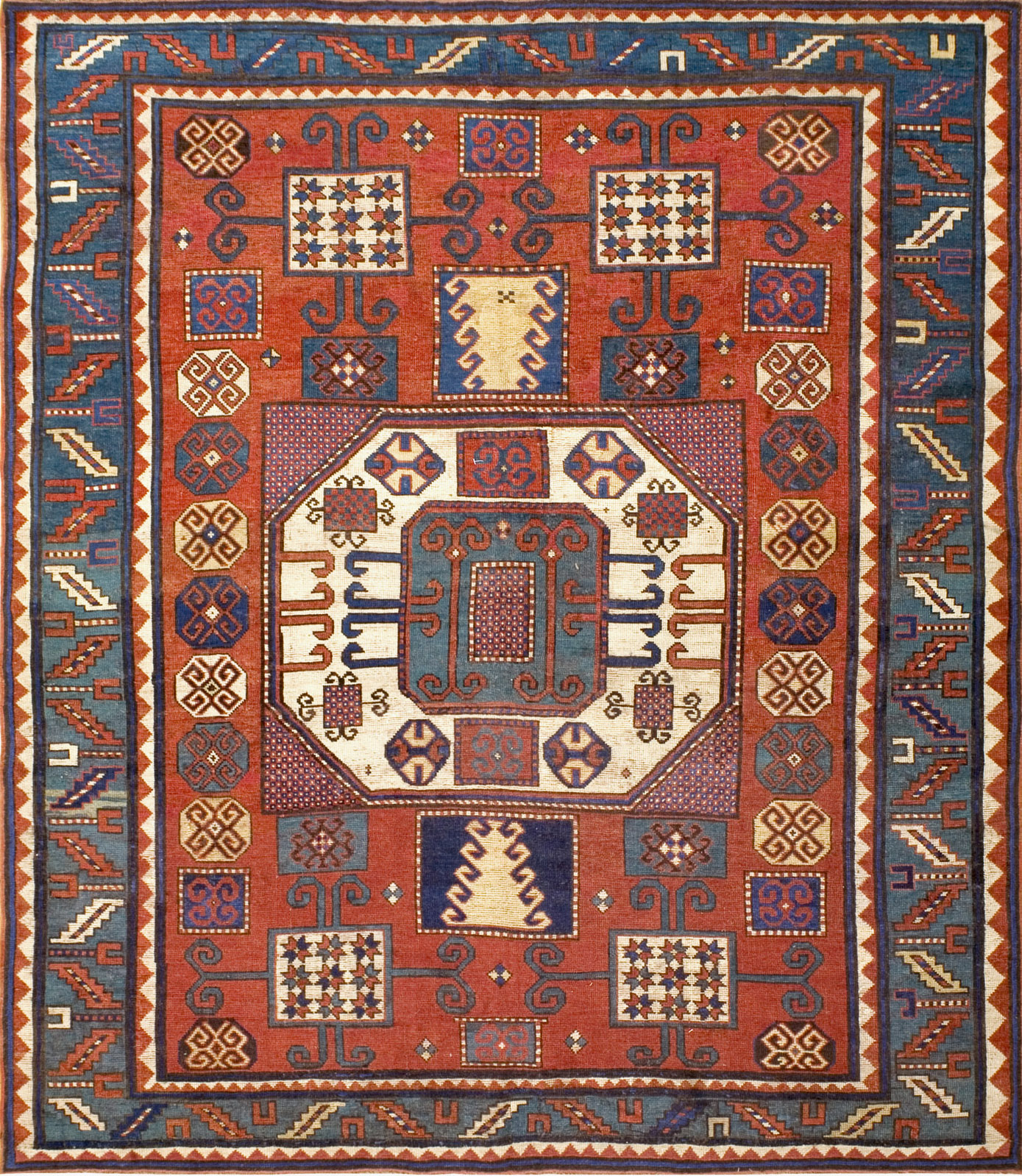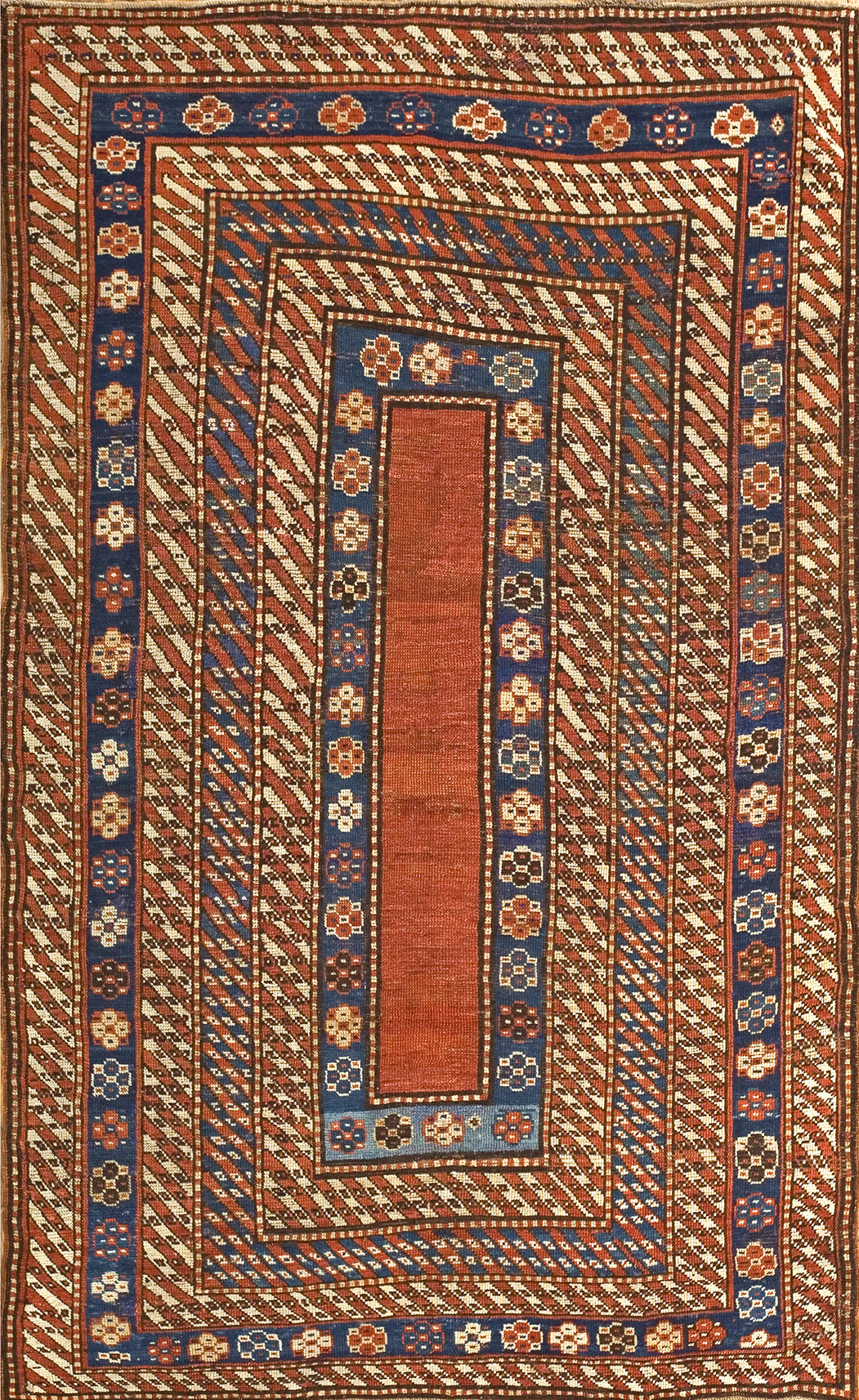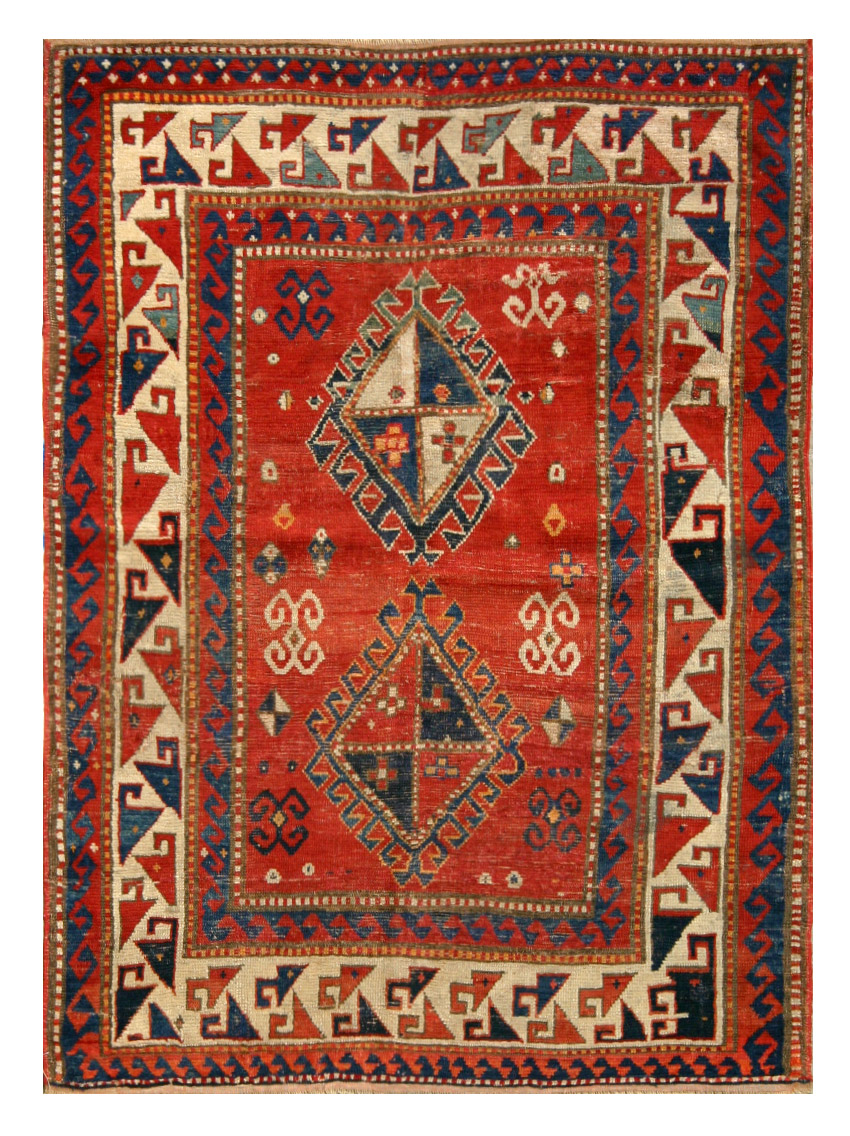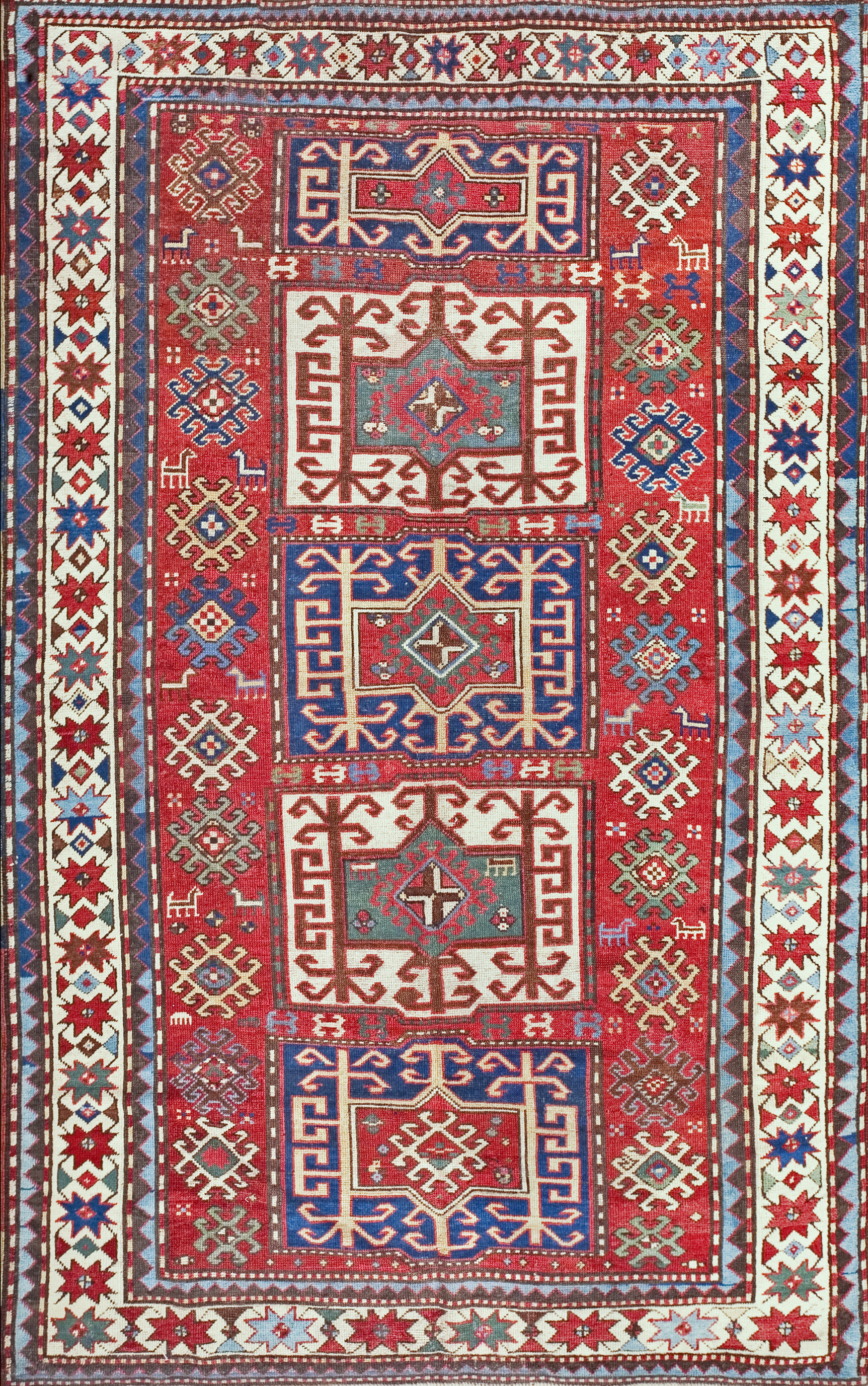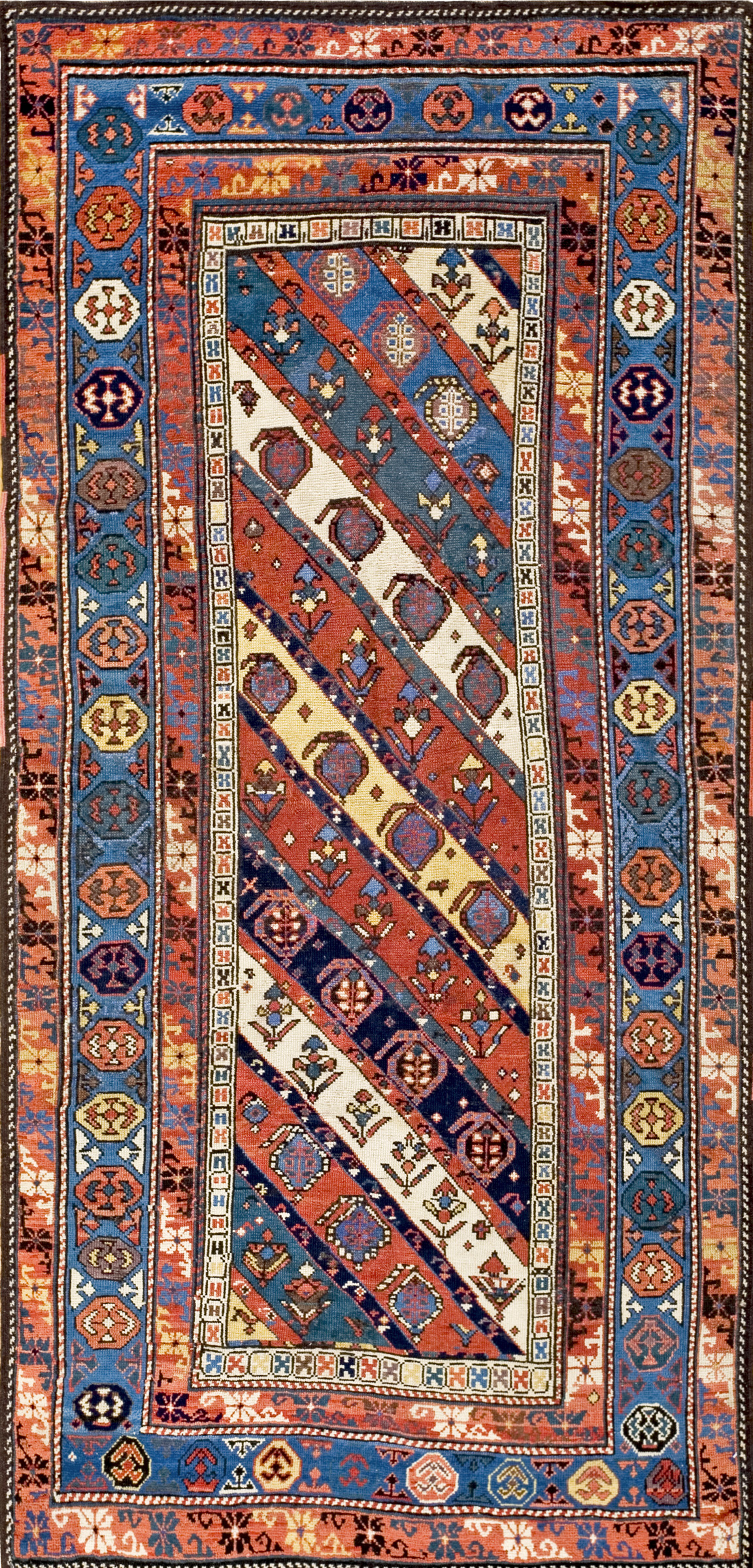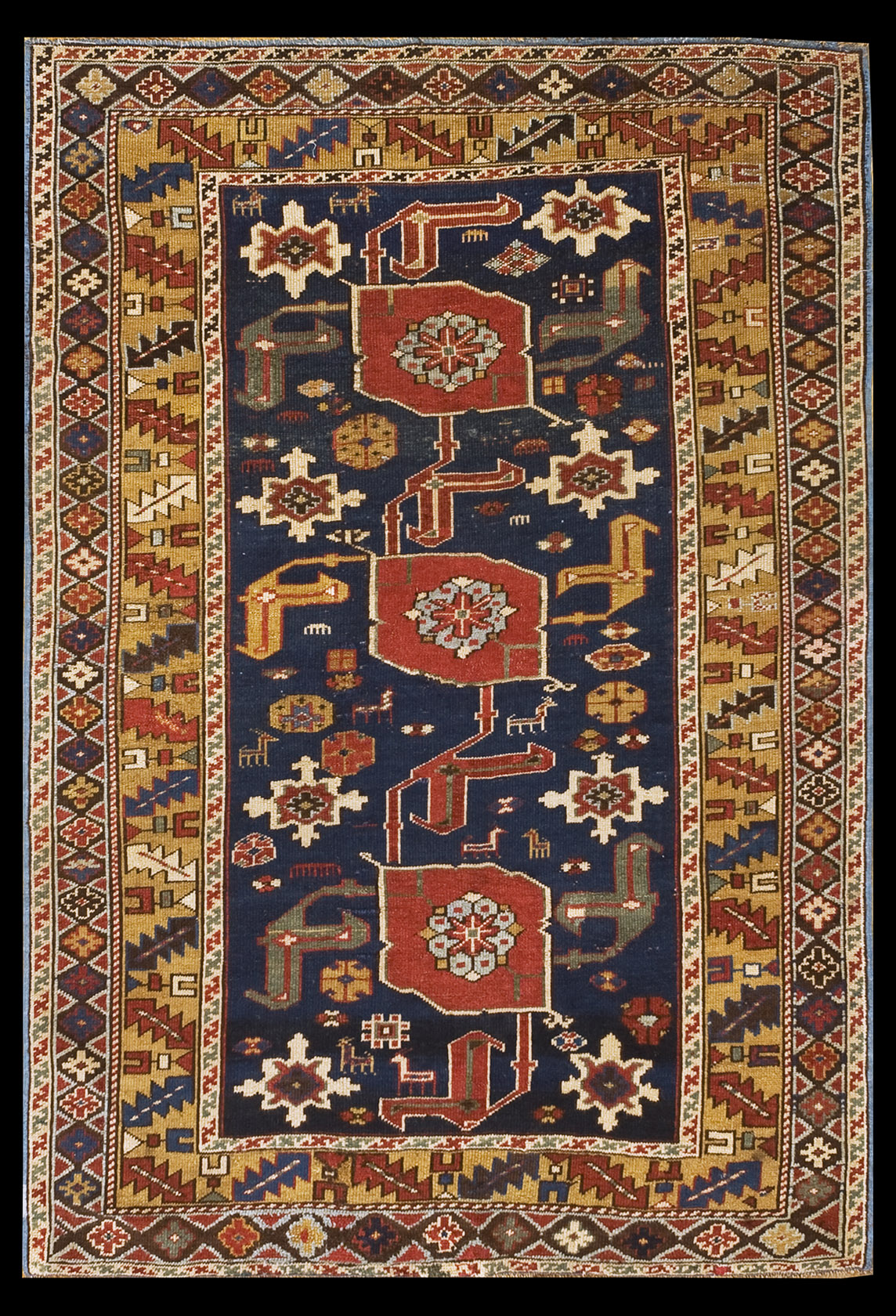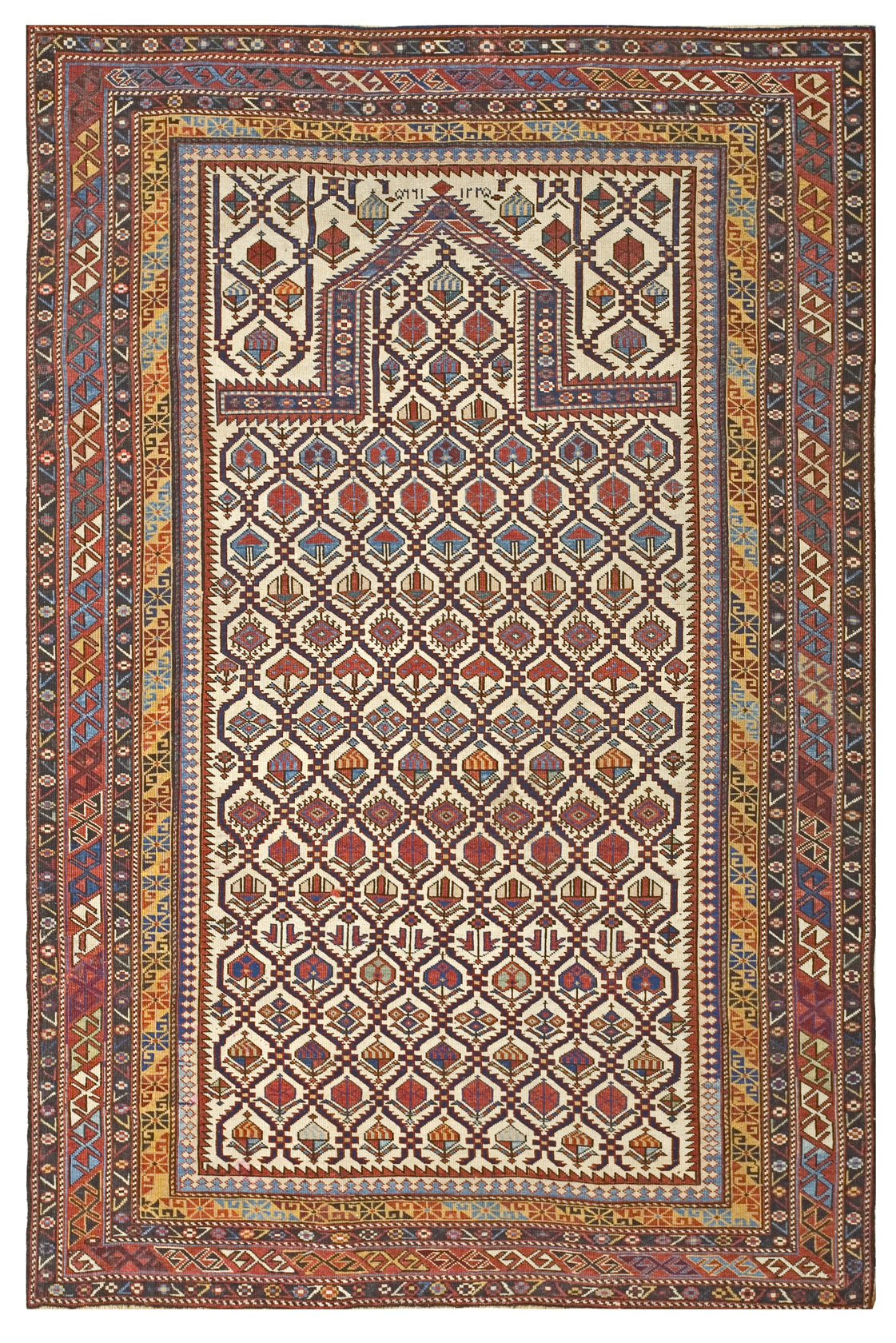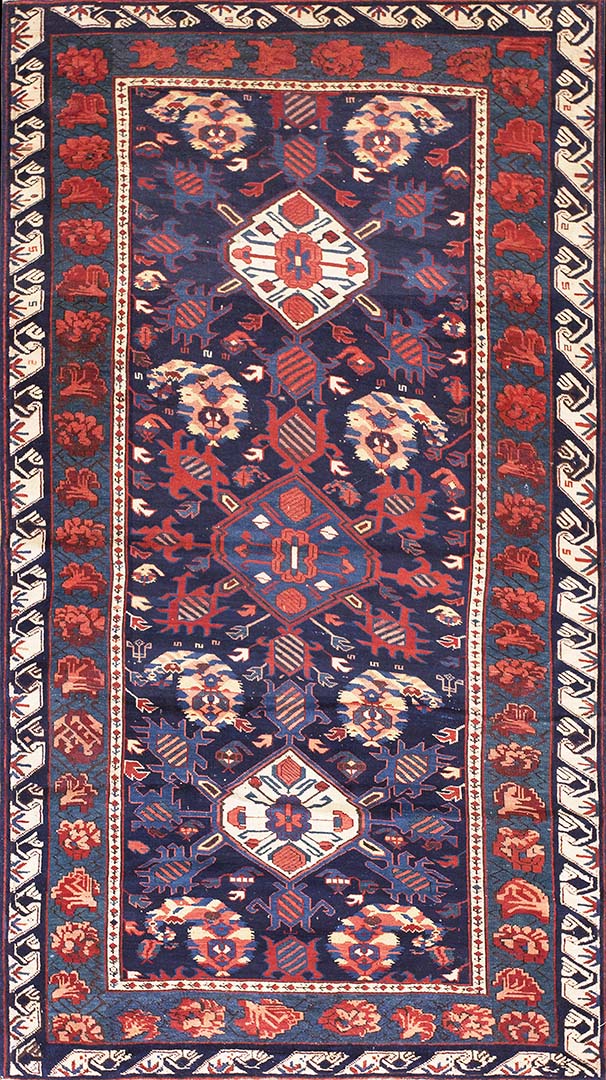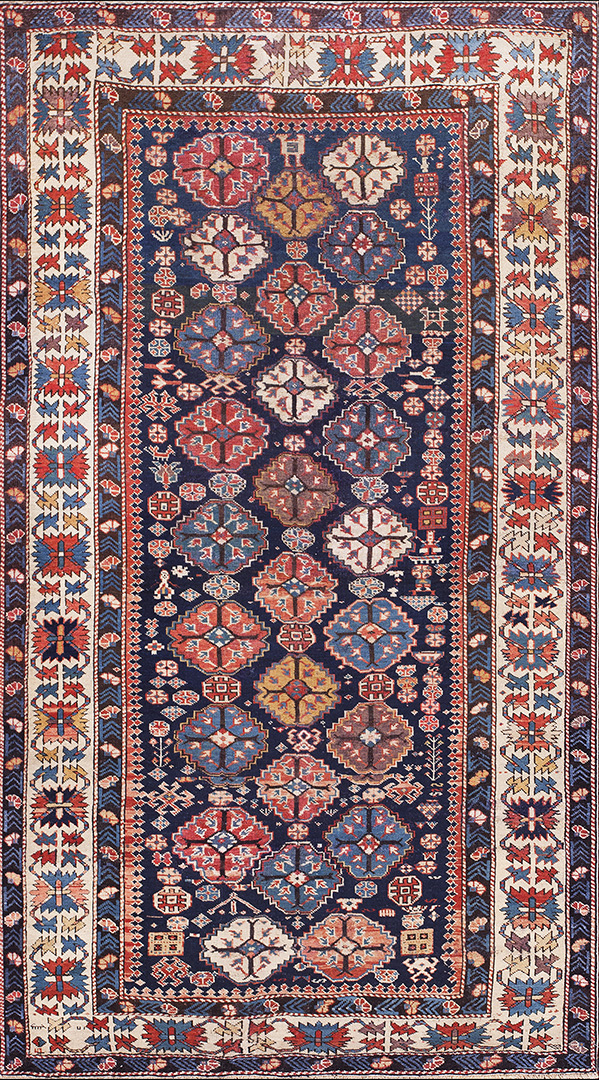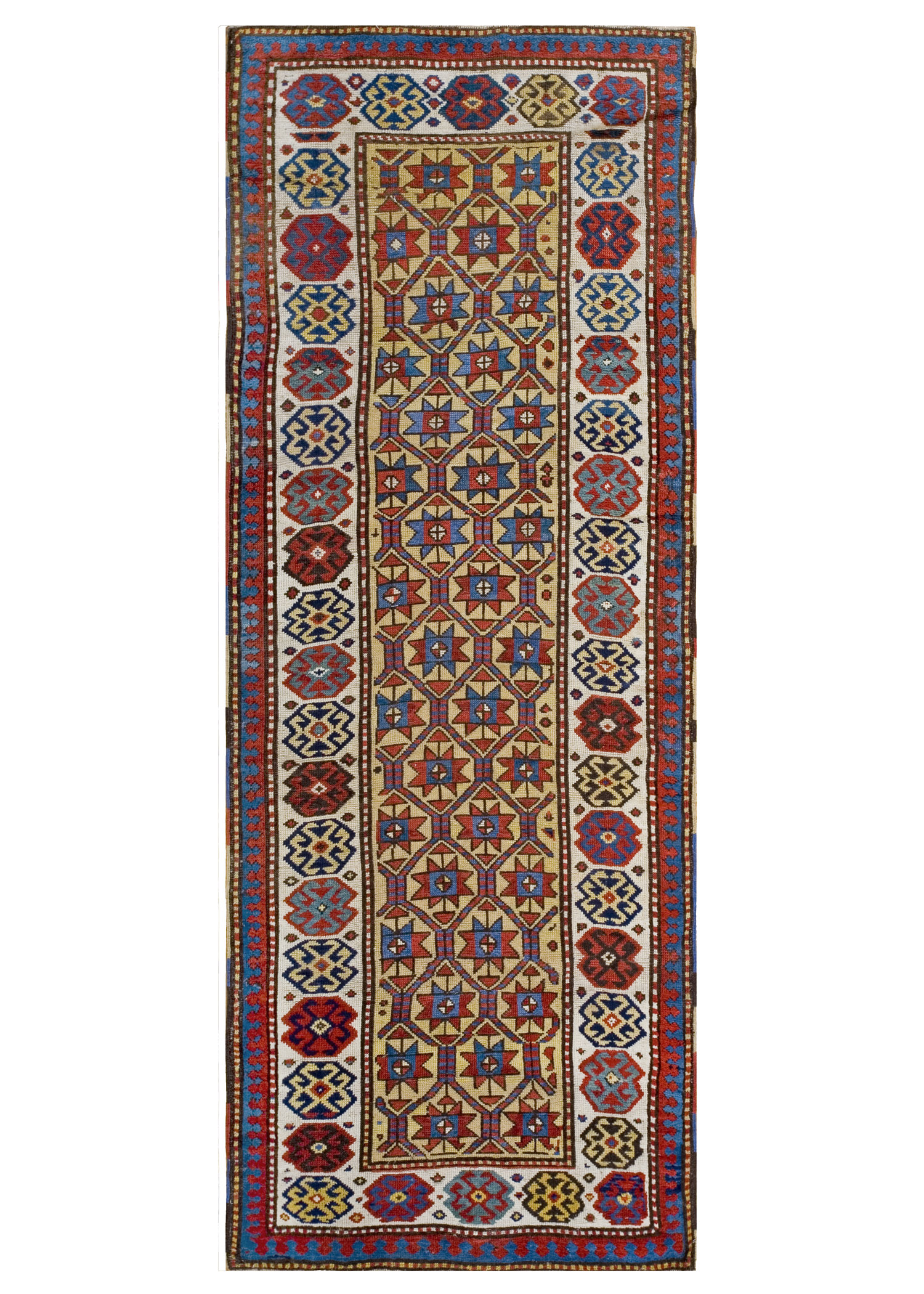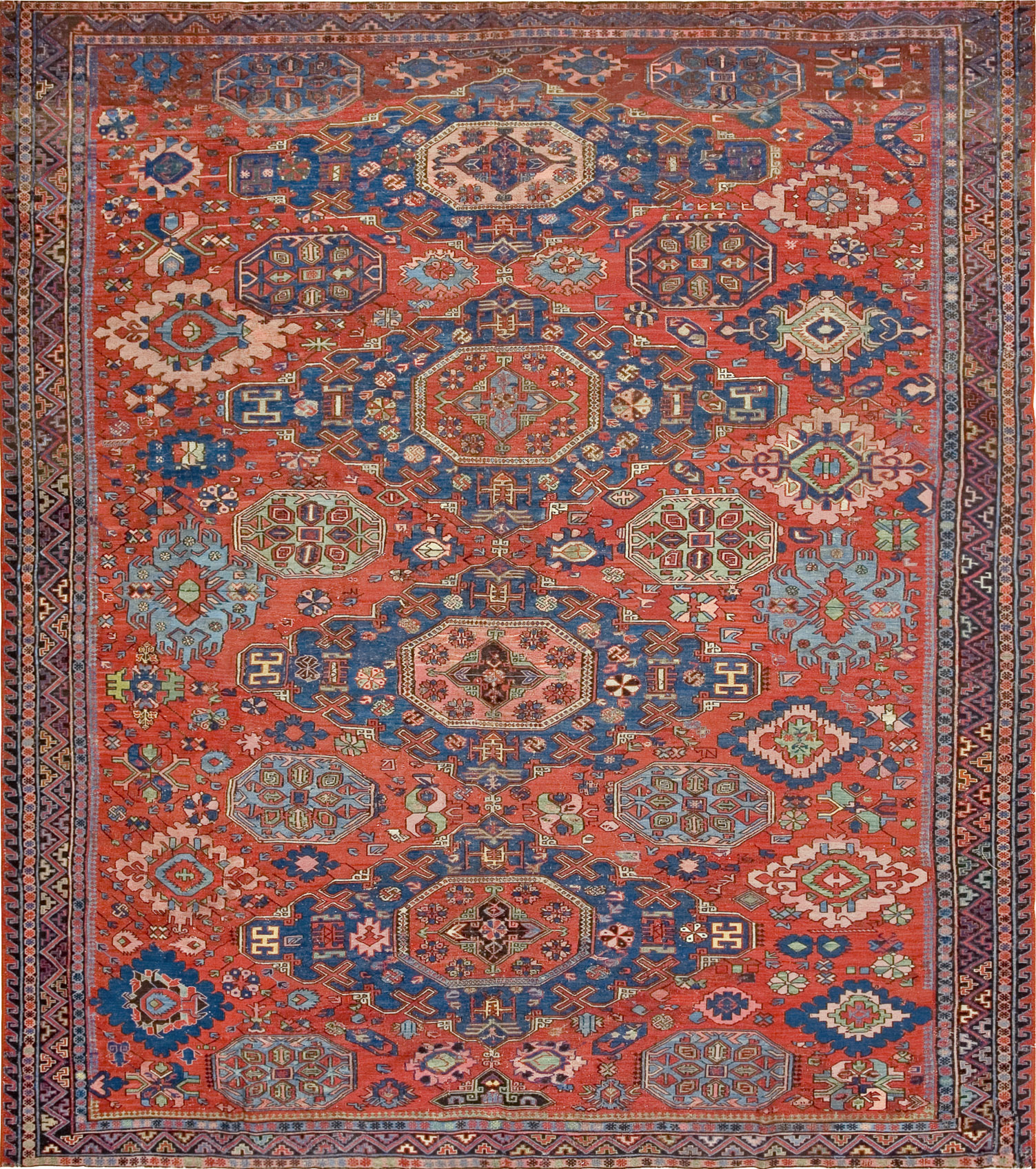Two Very Interesting Caucasian Long Rugs.
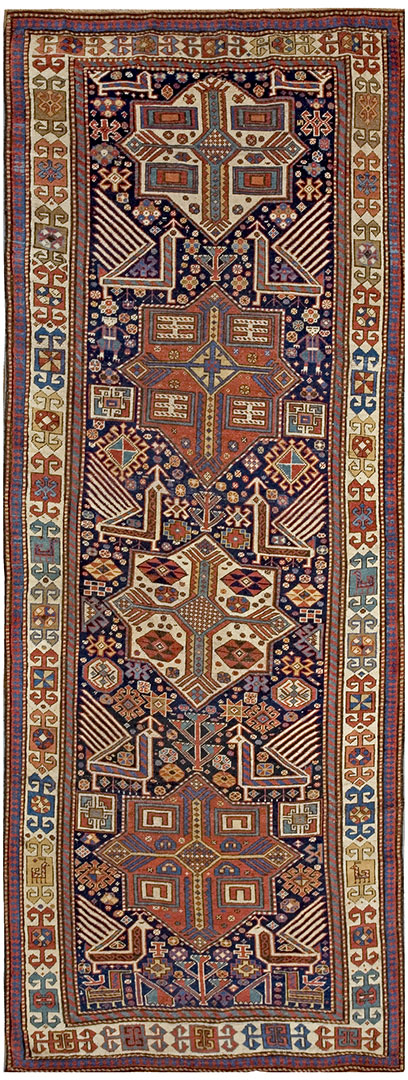

Our Caucasian Blog only briefly sketched the range of types from this mountainous region of a thousand languages and ethnicity. Here are a couple a particularly interesting pieces that help to expand on our remarks.
Good things do not last at Rahmanan! Somebody else may be interested in these rugs, but you still have a chance. Anyway, you can still see why attention should be paid. Consider the Akstafa. Our Caucasian Rug blog of last week did not mention Akstafa as a distinct type. Indeed, nobody did until the 1980’s.Located and regular between Gendje and Shirvan, this highly individual weaving district seems to have almost exclusively specialized in just two rug types: a long rug, as here, with pairs of peacocks around eight-point medallions, on navy or brown-black fields, with a close scatter of smaller geometric devices. The more variety in these elements, the better the rug. Since our example has a particularly dense fill, it must be, and is very good. A true work of folk art. The other Akstafa design appears on prayer design rugs of smaller format and is usually an allover boteh (paisley) pattern. Both types employ the same ivory border with hooked squares. Akstafa seems not to have woven scatter rugs. Do not cut these artistically intriguing long rugs to make scatters!.
Rug no. 21711 (3.8 by 11.0) is a particularly fine example from a rare group of mid-19th century Shirvan long rugs, almost always with radiant blue, more or less open, grounds. A few simple geometric devices scarcely interrupt the open window character of the long royal blue ground. One can virtually step through it, into…….This rug is the aesthetic antithesis of the Akstafa, saying a lot with very little. Minimalist modern art has nothing on this piece.Neither rug is more valid, more beautiful than the other. This Shirvan long rug, one of a select group of no more than a few dozen known examples, employs, as almost all the others do, a poly chrome border of triangles, the so-called ‘Dragon’ pattern, which to our eyes looks more like a parade of wedgie shoes! So call it the colorful wedgie shoe border. Several examples of this select group are dated before 1850, and no. 19711 may be significantly older than our ultra-conservative attribution. The weave is neat, even and regular
Are these rugs collectible? If you want to hang them vertically,then better have a mansion or country estate with tall ceilings, or you can roll them out for carpet aficionados to drool over. Or you can just treat them right and live with them and love them. What’s not to like?
Details of rugs.

